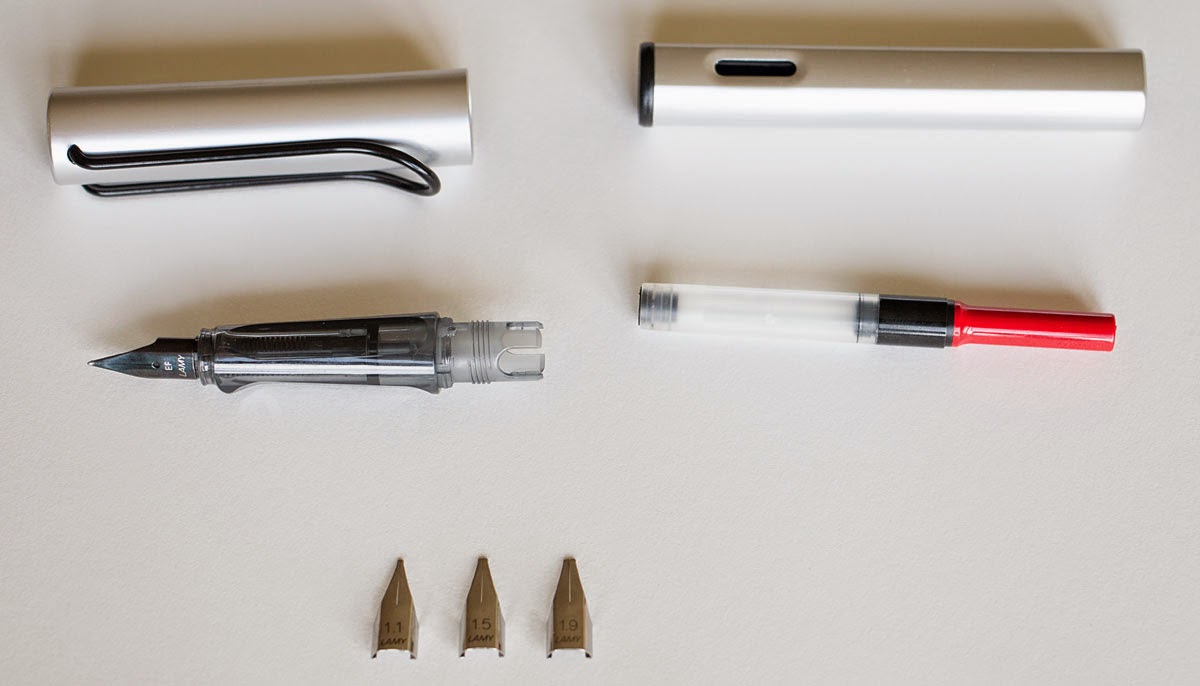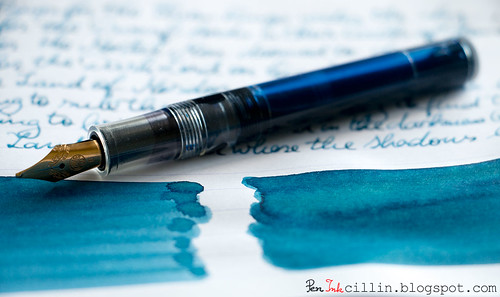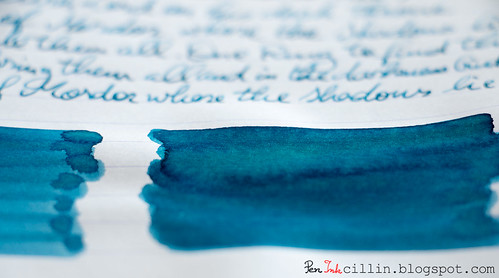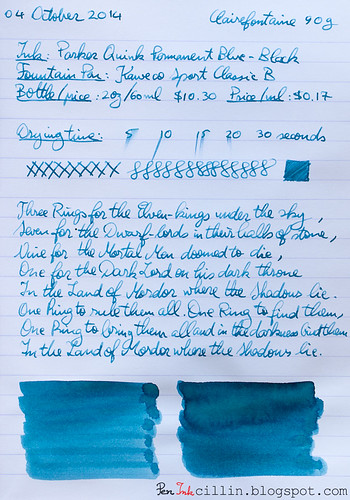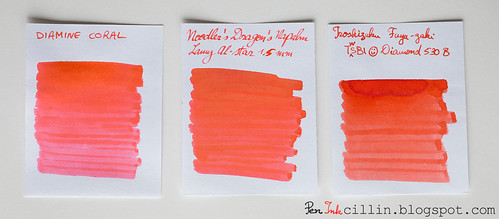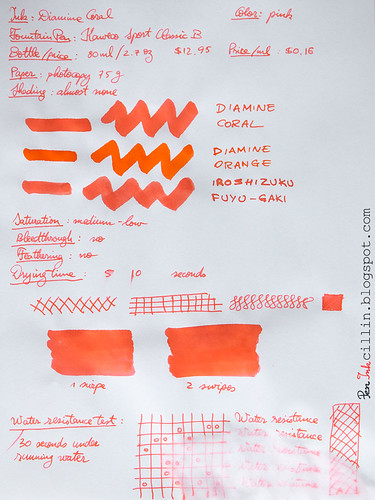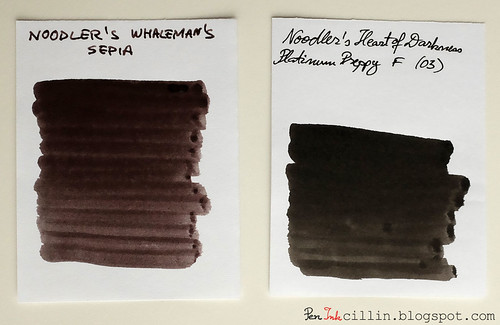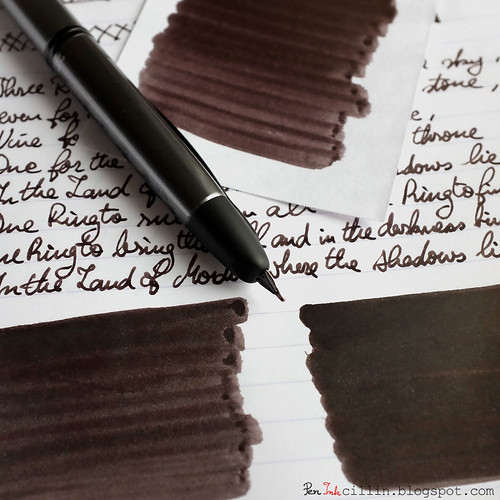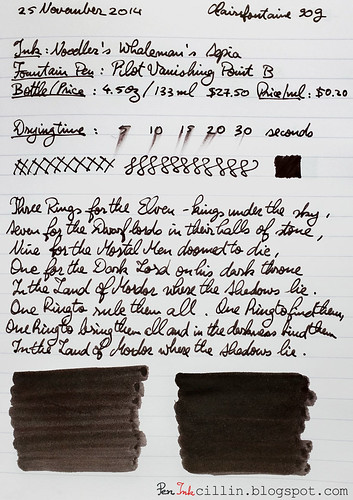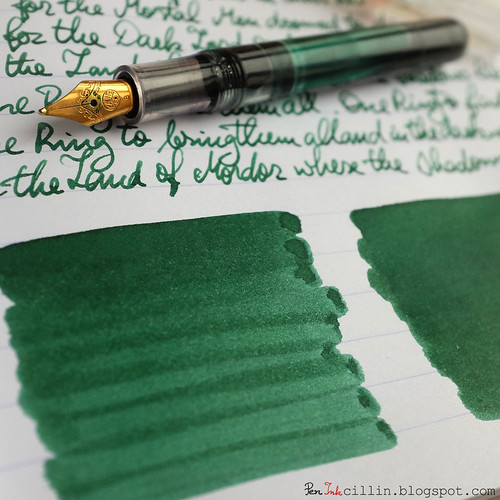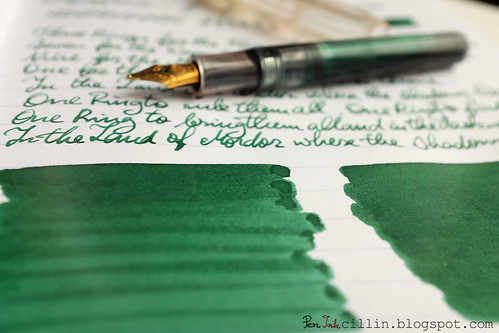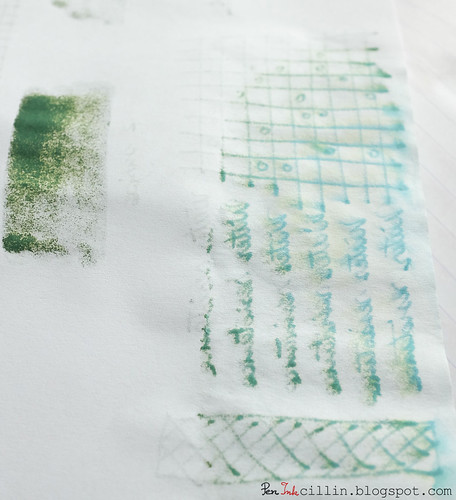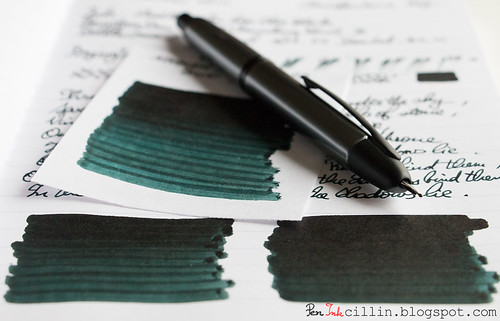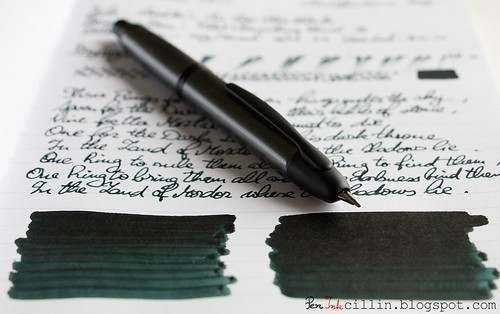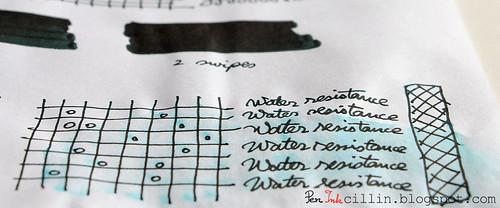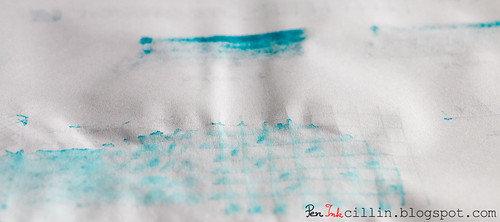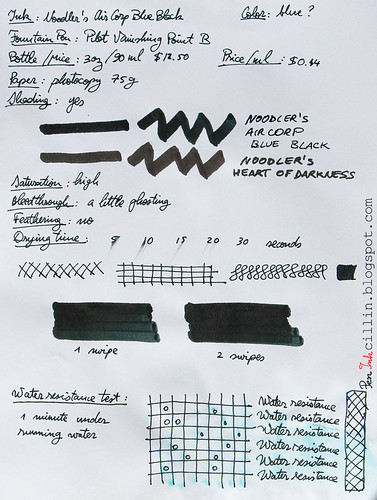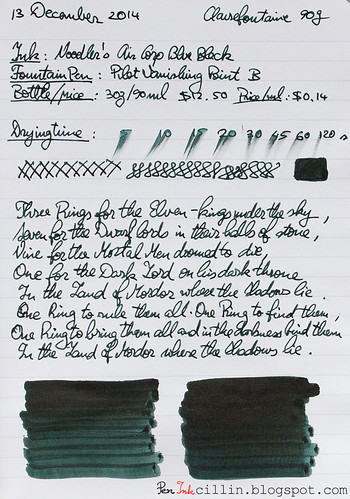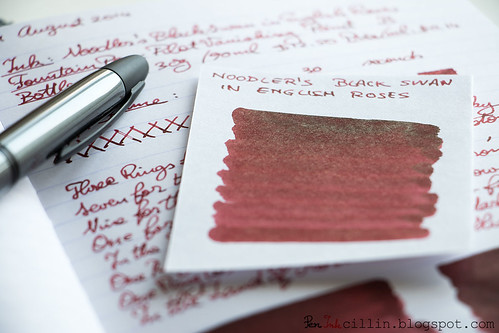This was a long time in a-coming but here it is: a review of the Jinhao 599 fountain pen I picked up on eBay almost a year ago for $2.75, including shipping from China. If you're looking for a similar bargain you might have to do what I did: watch several auctions at once and place minimum bids on the ones that are closing soon. Eventually you'll win a pen.
What is the Jinhao 599?
Apart from the obvious - a fountain pen - the Jinhao 599 is very clearly a Chinese clone of the German Lamy Safari / Vista. My copy is transparent smoke plastic, which puts in it line with the Lamy Vista.
The 599 isn't an exact replica, and that is also very obvious. However, plenty of design cues were poached straight from Lamy's classic line of fountain pens. More on this later.
Why would anyone, then, buy such an imitation? Well, the answer that comes to mind is that the Jinhao 599 is
very cheap for a fountain pen, rather understated as Chinese pens go, and comes with a international sized piston converter, which can't be said for the Lamy Safari family.
Packaging
I'm afraid I don't recall if the pen came in a box or not. I believe it was inside a rather cheap-feeling cardboard box which I disposed of shortly.
Body, construction, and dimensions
My Jinhao 599 is, as previously mentioned, made out of transparent smoke-colored plastic. There are other variations out there, in a multitude of colors. I was also surprised to find out recently that there's a version made entirely out of metal (brass if I'm not mistaken), but covered in glossy paint, such that it resembles the plastic Lamy Safaris are made of. Those metal 599s look so good in the eBay pictures that I was tempted to buy a whole dozen of them in all the colors.
Here are some dimensions for the Jinhao 599:
Length capped: 137 mm / 5.4 in
Length uncapped: 129 mm / 5.08 in
Length posted: 165 mm / 6.5 in
Cap length: 65 mm / 2.56 in
Here's the weight, compared to other pens I've tested:
Jinhao 599 (with cap) - 17.8g - 0.63oz
Jinhao 599 (without cap) - 10.5g - 0.37oz
Pilot Vanishing Point (with cartridge and blind cap) - 30.5g - 1.08oz
TWSBI 530 (no ink) - 25.7g - 0.91oz
Lamy AL-Star (with converter) - 21.8g - 0.77oz
Noodler's Ahab (no ink) - 18.8g - 0.66oz
Pilot Prera (with converter) - 16.1g - 0.56oz
As you can see, this is among the lightest fountain pens that crossed my path. I don't mind that, it actually feels good to pick up.
The body construction looks very decent, and there are no blemishes or sharp edges. It feels very well machined. The Chinese have really got this inexpensive manufacturing down to a fine art. Of course, there are controversies regarding this, but let's not go there.
The resemblance to the Lamy Safari/Vista is strong, as mentioned. Unfortunately I don't have my Lamy AL-Star anymore, to compare, but the cross-section of the body is almost a mirror image to the Lamy: a flattened circle. The Jinhao log is embossed at one of the ends, almost in mockery to Lamy's identical design.
To add insult to injury, the Jinhao's section is also triangular, same as the Lamy's trademarked one. Some people don't like the feel of the triangular grip but I like it just fine.
The cap is slightly different, with a shiny flat black and opaque finial holding the clip. If there's one thing that distinguishes the Jinhao 599 from a Lamy, it's the clip. Compared to the Lamy's thick wire clip, the Jinhao's is rather pedestrian, in the form of a flat chromed blade with rounded edges and a slightly curving tip. It's also split along the middle and features a tiny logo which I believe resembles a horse-drawn cart. Like the Lamy, the Jinhao's cap is snap-on.
The cap posts firmly and securely on the end of the barrel.
Finally, the section is separated from the barrel by a chrome trim ring, again deviating from a Lamy.
The Jinhao 599 one-ups the Lamy family by including an international piston converter (it also accepts international cartridges). It's not the highest quality but it does its job. In contrast, a Lamy converter costs almost twice as much as what I paid for the 599 itself, and is also proprietary, meaning that it only accepts Lamy converters and cartridges. Now that's what I call value!
A closer look at the nib
The nib, along with the feed, also differ from those in a Lamy pen. They are, in fact, quite pedestrian, and look like any other nib and feed you've seen before.
I have no idea what size the nib is. It feels somewhere between a medium and a fine. Let's say Japanese medium or European extra-fine.
The nib is engraved, rather delicately and precisely, with the word "Jinhao" and "18KGP" below that. If the 18KGP is meant to signify a gold nib, that must be a joke because this nib is quite hard and stiff. Besides, the price point invalidates the presence of a gold nib.
If you're wondering whether the nib and the feed can be pulled out easily, well, the answer lies in the image below. Yes, they can be pulled out with your fingers.
But does it write?
I wasn't too impressed with the Jinhao X750's performance when I reviewed it the
first time or the
second time around. This made me a bit wary about the 599. I was pleasantly surprised to discover that it wrote quite well, considering the price point and how hard the nib is.
The nib is smooth and the tines were well aligned right out of the gate. If the ink is primed correctly, it doesn't skip at all, and writes consistently, although it does seem to prefer better quality paper. I used
Noodler's Heart of Darkness in it and I have to admit that, perhaps due to the thinness of the nib, it doesn't come out as dark as I would like. I'm guessing another ink would do it more justice.
Here's a sample written with the Jinhao 599 on Clairefontaine 90g paper.
Final words
Being 95% satisfied with the Jinhao's 599 performance, I plan to make it my permanent work instrument, replacing the
Kaweco Sport Classic that I've been using for so long. I'll probably change the ink with something else, but I'm looking forward to using this pen in an official capacity. It also helps that the design is very understated, as Chinese fountain pens go, since they usually tend to be gaudy and flamboyant.
What more is there to say? The Jinhao 599 was one of my best purchases and I can't recommend it highly enough, especially at this price. If you are patient you too can snag one for less than $3, shipped. It's well worth it. There's always the chance that quality control is spotty and your version might be a dud, but hey, at least you're not spending dozens or even hundreds of dollars on a pen that won't write out of the box.
